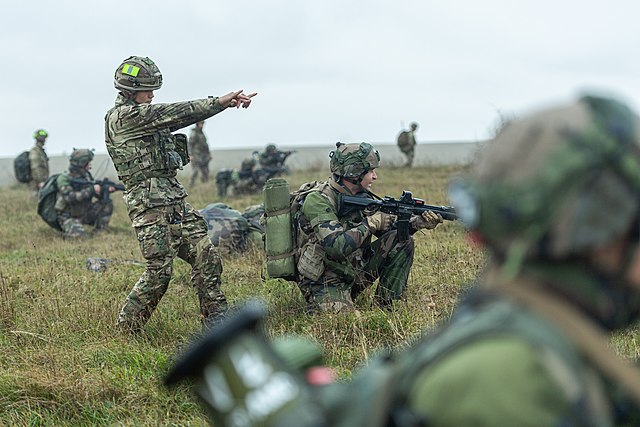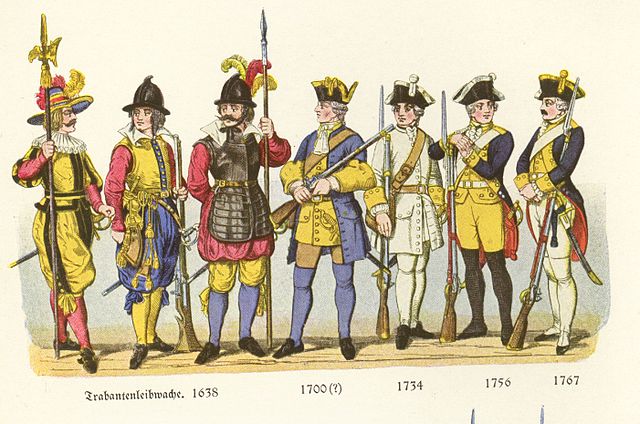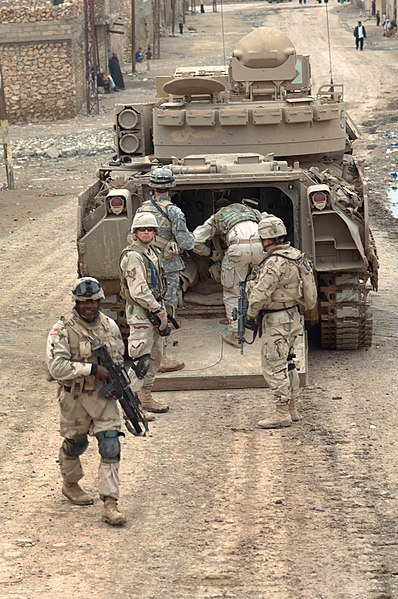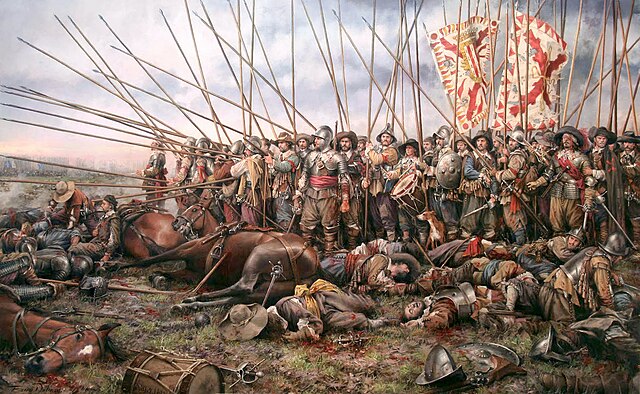Velites were a class of infantry in the Roman army of the mid-Republic from 211 to 107 BC. Velites were light infantry and skirmishers armed with javelins, each with a 75cm wooden shaft the diameter of a finger, with a 25cm narrow metal point, to fling at the enemy. They also carried short thrusting swords, or gladii, for use in melee. They rarely wore armour as they were the youngest and poorest soldiers in the legion and could not afford much equipment. They did carry small wooden shields called parma for protection, and wore headdresses made from wolf skins so their brave deeds could be recognized. The velites were placed at the front partly for tactical reasons, and also so that they had the opportunity to secure glory for themselves in single combat.
Veles
A stylized parma
Infantry is a specialization of military personnel who engage in warfare combat. Infantry generally consists of light infantry, irregular infantry, heavy infantry, mountain infantry, motorized infantry, mechanized infantry, airborne infantry, air assault infantry, and naval infantry. Other types of infantry, such as line infantry and mounted infantry, were once commonplace but fell out of favor in the 1800s with the invention of more accurate and powerful weapons.
French Army and British Army infantry during a military exercise in 2020
Various infantry of the 17th through 18th century (halberdier, arquebusier, pikeman, and mix of musketeers and grenadiers) of Duchy of Württemberg
Infantry of the 3rd Armored Cavalry Regiment of the United States Army boarding an M2 Bradley IFV in Iraq in 2006
Rocroi, el último tercio ("Roicroi, the last tercio") by Augusto Ferrer-Dalmau, portraying infantry of a battered Spanish tercio at the 1643 Battle of Rocroi






